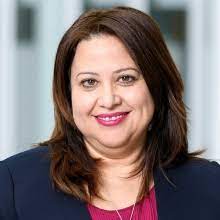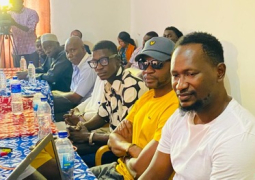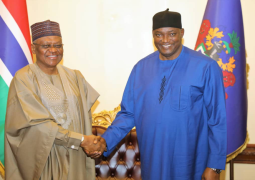
The Harmonizing and Improving Statistics in West and Central Africa (HISWACA) Project, Phase 1, is aimed at building statistical capacity to improve the quality of data production, regional harmonization, data access and use, as well as modernize statistical systems in Benin, Guinea, Guinea-Bissau, Mali, Mauritania, Niger, Senegal, and The Gambia. It will also support the statistical divisions of the Economic Community of West African States (ECOWAS), the West African Economic and Monetary Union (WAEMU), and the African Union (AU) to better coordinate and improve the harmonization of statistics across the region.
The new project will enhance evidence-based decision-making, resource allocation, accountability and transparency in a region that is home to over 120 million people living in extreme poverty.
“Accurate, timely, and reliable data and statistics are critical for designing, implementing, and monitoring effective development policies and programs to accelerate poverty reduction, promote equitable growth, and address climate change,” said Boutheina Guermazi, World Bank Director for Regional Integration for Africa and the Middle East.“Quality data that are comparable across countries are also vital for fostering regional economic integration to accelerate growth.”
While considerable efforts have been made to improve statistical capacity in Sub-Saharan Africa, progress has been slow and uneven across countries. Most Western and Central African countries currently rank among the bottom 40% globally on the World Bank’s new Statistical Performance Indicators (SPI), which assess a country’s statistical system’s ability to meet users’ needs and contribute to better decision-making.
The availability of high-quality statistics is key for successful implementation of poverty reduction strategies, economic progress, and development outcomes.
“Well-performing modern statistical systems that produce high-quality data are critical to help improve lives and livelihoods. This regional project will be a game-changer in transforming the data landscape in West African economies and for their people,” said Johan A. Mistiaen, World Bank Practice Manager for Equitable Growth, Finance and Institutions for Western Africa.
A second phase of HISWACA Project, currently under preparation, will cover Cameroon, Central Africa Republic, Chad, Gabon, and the Republic of Congo.
The International Development Association (IDA) is the World Bank’s fund for the poorest. Established in 1960, it provides grants and low to zero-interest loans for projects and programs that boost economic growth, reduce poverty, and improve poor people’s lives. IDA is one of the largest sources of assistance for the world’s 76 poorest countries, 39 of which are in Africa. IDA resources help effect positive change in the lives of the 1.6 billion people living in the countries that are eligible for its assistance. Since its inception, IDA has supported development work in 113 countries. Annual commitments are constantly on the rise and have averaged $21 billion over the past three years, with about 61% going to Africa.
Read Other Articles In Headlines




